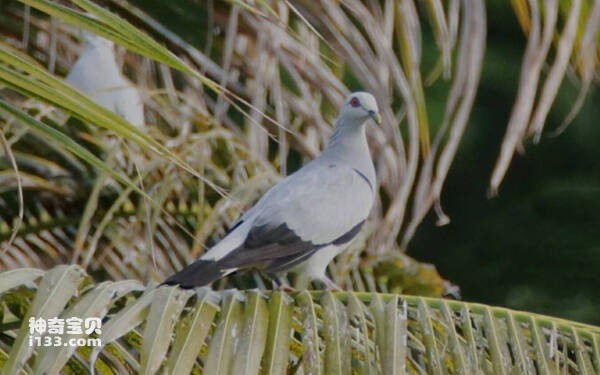Columba argentina
IUCN
LCBasic Information
Scientific classification
- name:Columba argentina
- Scientific Name:Columba argentina,Silvery Wood-pigeon
- Outline:Landfowl
- Family:P.Order P.family P.genus
Vital signs
- length:About 37 cm
- Weight:Around 350g
- lifetime:No textual research information is available
Feature
The feathers are pale silver-gray, and the flight and tail feathers are black
Distribution and Habitat
Silver pigeons were found in the Natuna Sea and west of Sumatra, Indonesia in the late 19th and early 20th centuries. The oldest specimens were collected near Kundian, and have been found in Sarawak, Simero, South Bagai and Sipora Islands, Riau, Yanambas, Natuna Islands, Jambi Province in Sumatra, and South Sumatra. It was found in Bintan Island, Kalimantan Island and Halfway Island.
Silver pigeons live in mangroves and other coastal woodlands below 100 meters above sea level.
Appearance
The appearance of the silver pigeon is similar to that of the spotted imperial dove, but their plumage is pale silver-gray, and the feathers on the back of their neck have a green sheen. Their flight feathers and tail feathers are black, and these tail feathers are the same length. They have a slanted forehead, dark red or purple tumbles and eyes, darker jaws, dark purple beaks, and pale apple-green tips. The feet are bluish-gray with some red spots. They are smaller than the spotted royal dove, about 37 cm long, the female is larger and darker than the male, and the upper body of the young is sandy brown. Compared to other related species, they are estimated to weigh an average of 350 grams. Judging from the color of the silver pigeon, they may have evolved in convergence with the spotted emperor pigeon, or they may be a Miller mimicry.
Details
Silvery Wood-pigeon, Columba argentina or silvery wood-pigeon, often lives with large groups of pigeons and even breeds in the same nesting areas. They start breeding around March or April and last a few months. They build their nests in the branches of trees and lay only one egg at a time, which is grey and lustless.

Birdlife International estimates that fewer than 50 silver pigeons remain, so they are listed as endangered. The reasons for their decline are unknown, but deforestation, especially of mangroves, must have had an impact. In addition, invasive species such as feral cats also affect their reproduction, but to a lesser extent. Today, there are no trace of them in Western Melo, Mentawai and Riau Islands.
Listed in the International Union for Conservation of Nature (IUCN) ver 3.1:2010 Red List of Birds: Endangered (EN).
Protect wild animals and eliminate wild meat.
Maintaining ecological balance is everyone's responsibility!








